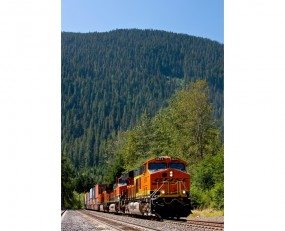
The US President is moving to avoid a rail strike. Fearful of the effects on an already vulnerable American economy, Joe Biden has appointed a so called “Presidential Emergency Board” which will investigate the dispute and then make recommendations for the settlement of the dispute. There will be a thirty-day period for the investigation followed by a further thirty days for implementation of the deal.
The strike is being led by the Brotherhood of Locomotive Engineers and Trainmen but it also appears to have the support of other Unions and groups of workers. The Brotherhood of Locomotive Engineers and Trainmen assert that the voting over the strike had “99.5% of the participating members” voting “to authorize a strike”. The Union is demanding a new contract around an increase pay but there also seems to be anger around working conditions in the rail companies, with the leader of the Union stating that rail workers also want “a contract with meaningful wage increases and good benefits. They want jobs that give them the ability to have a life outside of work.”
The rail companies are being accused to pushing their workforces too hard but also running an “employee and shipper be damned” business model” with the “rest of the Nation’s economy” struggling “due to a supply chain crisis created in large part by the carriers’ business model”.
There seems to be a strong understanding among the rail unions that the politicians cannot afford a rail strike. Rather they will lean on the rail companies to come to a deal. This appears to be what is happening. However, there is a wide point around the operating model of the railways. Over the past ten years or more they have seen a revival of their fortunes, with strong demand in part from growing container and inter-modal volumes. Yet there may be a question over whether they have become complacent, failing to invest in new capacity and productivity, leading to not just unhappy workforce but also dissatisfied customers.
Source: Transport Intelligence, 19th July 2022
Author: Thomas Cullen